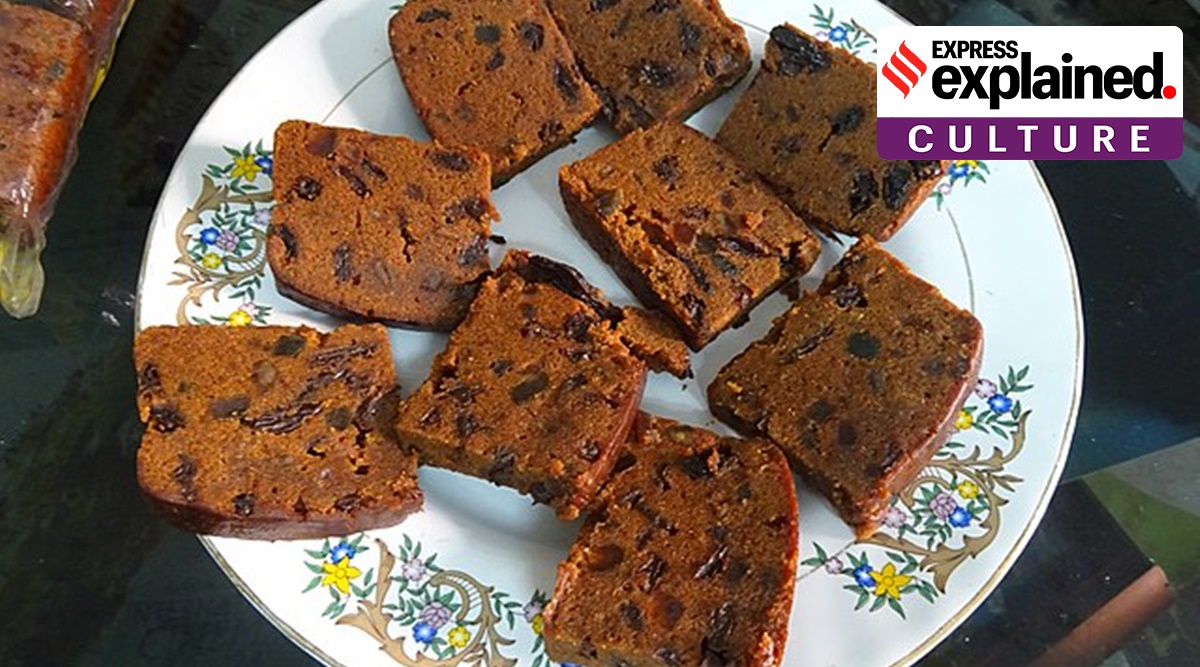
Across India, Christmas celebrations are not complete without a special kind of cake, known as ‘plum cake’ (despite almost never containing plum, dried or otherwise), ‘fruit cake’, or ‘Christmas cake’, depending on which part of the country you come from. Dating back to the time of British colonial rule, the cake has become a part of Indian culture and is a much-awaited treat towards the end of the year.
The cake takes various forms across the country, with culinary traditions in different regions influencing the ingredients as well as the baking process. We take a quick look at the history of the plum cake in India, and its different avatars.
A short history of the plum cake
The plum cake’s history can be traced back to medieval England, where the weeks leading up to Christmas, called Advent, saw a period of self-denial, fasting and abstinence. This was supposed to prepare the body for the festive season of feasts and indulgences, and also to save food for the celebrations.
Subscriber Only Stories
It was around this time that the custom of cooking and eating a special porridge on Christmas Eve started. This porridge is supposed to have consisted of oats, dried fruits, spices, honey, and even meat (not always, though), and would over the centuries be transformed into what we know as the plum cake today.
In the 16th century, certain ingredients were added and substituted in the porridge: flour took the place of oats, and butter and eggs found their way into the mixture. Meat was taken out, becoming the basis for other Christmas savoury dishes.
This dense batter was cooked in a muslin cloth in a pot of boiling water by the majority of the population, while the richer households which could afford ovens baked the mixture. The process of cooking the pudding started at the beginning of Advent, and it was saved until the twelfth day of Christmas celebrations, when it would be served upside down with a sprig of holly as garnish.
However, one thing was for certain: there were no plums in this dish, which makes the origin of its name a mystery. Some believe that raisins were referred to as ‘plums’ in medieval England; since the recipe called for an abundance of them, the dish came to be known as ‘plum pudding’. On the other hand, some think that the original mixture contained prunes (dried plums), which were eventually replaced by more exotic dried fruits.
Advertisement
Whatever the reason, the name stuck. Across centuries and continents and countless transformations, the dish has been called plum cake. Another thing that has stayed the same is that none of the variations contained plums either.
How the plum cake became Indian
As British imperialism spread, there was an influx and blending together of different culinary traditions from across the world.
The Indian Christmas cake saga started in 1883 when a British planter in Kerala’s Thalassery asked the local baker, Mambally Bapu (his descendants still run his namesake bakery in the town), to prepare a cake for him along the lines of the rich plum cake he had received from England.
Advertisement
Bapu decided to incorporate local ingredients into the decidedly foreign cake: instead of European brandy, he put locally brewed liquor, which was made with cashew apples and the banana variety called ‘kadalipazham’. Moreover, since yeast was not easily available, Bapu used local liquor in its place as well, which gave the dish a unique taste. According to his family, the cake was so good that the Englishman ordered a dozen more.
Almost every city in India has one or two bakeries known for their iconic Christmas cakes: Kolkata has Nahoum & Sons, Bengaluru has Albert Bakery, etc. Every region (more likely, every household) has its own twist on the cake, but despite this, all avatars share a few common characteristics: they are all full of dried fruits and nuts (which are soaked in rum for weeks), candied fruits, and of course, spices like nutmeg, cinnamon and cloves. Also, Indian plum cakes do not contain lard like their British counterparts. They are usually made with butter or at times, ghee, or sometimes even a combination of the two.
One unique type of plum cake is the Allahabad version with ‘petha’ (translucent white candy made from white pumpkin). In Indian Christmas: An Anthology (edited by Jerry Pinto and Madhulika Liddle), journalist Priti David writes, “Petha, chopped into tiny cubes, added just the right shot of cloying sweetness and the tiny cubes of translucent whiteness held their own in the brown batter”.
Bagikan Berita Ini














0 Response to "How a cake without plums came to be called ‘plum cake’, and how it became the ultimate Christmas treat in India - The Indian Express"
Post a Comment